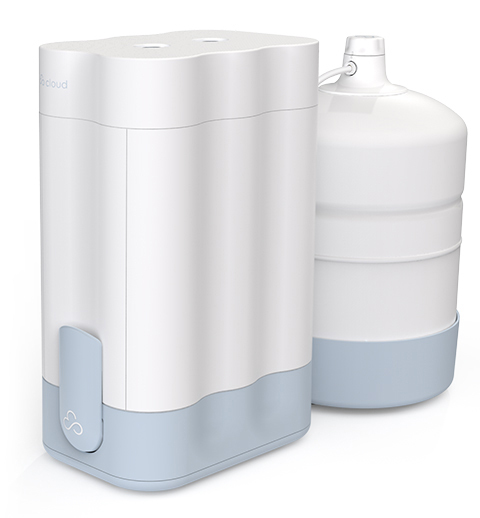Reverse osmosis (RO) is the most widely used water filtration method for in-home use.
RO removes TDS and other substances by forcing highly pressurized water through a very fine, semipermeable membrane.
Clean water flows through and contaminants remain trapped on the other side.
TDS, or total dissolved solids, measures the concentration of substances dissolved in water.
The Environmental Protection Agency suggests a TDS of 300-500 mg/L (as long as the total dissolved solids do not include dangerous contaminants).
Levels lower may lack healthy minerals and levels over 1,000 mg/L may indicate the presence of dangerous pollutants.
2,000+ mg/L is too high for most household filters to remove.
Why TDS Is Not an Accurate Measure of Water Quality
Some types of TDS can be healthy –- others can be toxic.
When you measure TDS with a handheld TDS meter, it doesn’t tell you what’s causing it, it only tells you the total concentration.
All natural water contains minerals that are healthy in the right amounts.
As water flows through streams, lakes, and groundwater, it picks up minerals like calcium, magnesium, potassium and sodium.
Too much calcium and magnesium, however, can make your water “hard” and damage pipes and appliances.
It can also cause skin irritation in some people.
And more often than not, high TDS is at least partly caused by dangerous contaminants like:
- Lead
- Mercury
- Arsenic
- Hormones
- Nitrates
- Fertilizers
- Pesticide
- Pharmaceuticals
But even TDS in the “safe” 300-500 mg/L range might still contain harmful pollutants.
The only way to know for sure is to have your water professionally tested by a state-certified lab.
Reverse osmosis systems can remove up to 99.9% of all substances from water, including total dissolved solids.
RO removes TDS through several stages of prefilters, resins, and membranes to leave your water squeaky clean.
Some also include a final remineralization stage to add healthy minerals back into the water for perfectly balanced pH.
Here’s a closer look at how RO removes TDS:
When the water enters the RO systems, it first passes through a sediment prefilter to remove larger particles of dirt, rust, dust and debris.
After that, it passes through an activated carbon filter to remove chlorine and improve the smell and taste of the water.
Depending on the system, the water may also pass through ion exchange resins, which remove hard minerals like calcium and magnesium by exchanging them for positively charged sodium ions.
Prefiltration also helps reduce wear-and-tear of RO membrane in the next stage.
2. Reverse Osmosis Filtration
Now your water is ready for the big guns!
The water is forced through a semipermeable membrane to remove dissolved solids.
The pores of the RO membrane are so fine that they’re too small to see with an electron microscope!
Water flows from the more concentrated (contaminated) side of the RO membrane to the less concentrated (clean) side.
The contaminated water is then eliminated from the system as waste.
After filtration, the water sits in a storage tank until you turn on the tap.
As the water flows from the tank to the tap, it passes through another activated carbon postfilter to “polish” the water and remove any remaining substances.
Last but not least, some RO systems also include a final remineralization stage to add healthy TDS minerals back into the water.
Can Ultrafiltration Remove TDS?
Ultrafiltration is similar to reverse osmosis in that they both feed water through very fine semipermeable membranes.
Microfiltration and nanofiltration systems work the same way too – the difference is the size of the molecules they trap.
Ultrafiltration has smaller pores and is ideal for removing colloids, protein, bacteria, and viruses.
However, ultrafiltration systems clog more easily and are not suited for hard minerals and other TDS molecules.
Microfiltration and nanofiltration systems have similar drawbacks.
That’s why when it comes down to it, RO removes TDS the best.
They also hold up better under daily residential use.
Cloud RO Water Filters also include a remineralization stage to add healthy minerals back into the water, plus built-in software to monitor your water quality 24/7 through an app on your phone.
Ready to enjoy tap water with perfectly balanced TDS?

